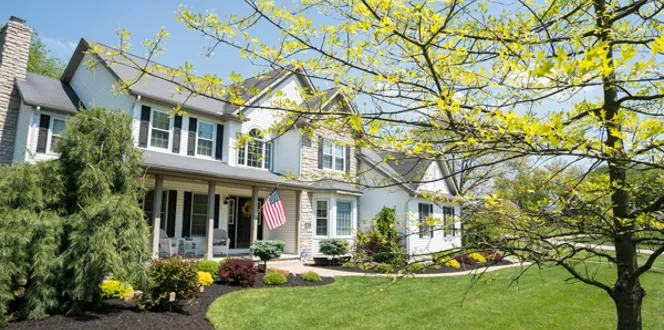Have you ever looked up at a tree and grown curious about its history?
All trees got their start somewhere, and there’s a chance the ones you see on strolls down the street or a walk in the park originated in your home state. They’re called native trees—tree species that are naturally found in your region and have been growing there for thousands of years.
There are good reasons why the next time you plant, you should consider planting a native tree. Below, let’s dig into the pros, and a couple of cons, of planting native trees.
How Does Planting Native Trees Help The Environment?
When you plant local trees, you help local wildlife live and thrive. Animals like birds and butterflies have looked to native plants for years for food and shelter. When there aren’t enough native trees around, these populations can quickly decline. That’s why native trees are important—they help support our local ecosystems.
What Are The Advantages Of Planting Native Trees?
There are so many great reasons to plant a native tree. They don’t just benefit the wildlife we share space with, but native trees can actually help us, humans, too. Here’s how:
- Many insects, birds, and animals depend on native trees for food and shelter. They’ll thank you for planting them!
- Living somewhere with blisteringly cold or awfully hot seasons? Native trees are well-adapted to the local climate, which means they’ll have the best chance at survival.
- While non-native trees might not do well up against local pests, native trees often don’t have as many pest problems.
Are There Any Disadvantages For Planting Native Trees?
Yes, native trees can come with a few drawbacks. For starters, they’re sometimes hard to track down. Not all local tree nurseries prioritize native plants, so you may have to do some digging to find what you’re looking for.
Secondly, native trees aren’t always foolproof. Just because a tree originated in your region, doesn’t mean it’s meant to grow in your yard. For example, a tree native to your state might grow best in sandy, well-drained soil, but maybe your yard’s soil is typically clayey and over-saturated. Or, a native tree that thrives in full sun won’t do well if you have a particularly shady landscape.
All that said, when you plant with the specific species’ needs in mind, such as climate, space, and soil environment, you have a good chance of growing a happy, healthy tree.
What Are The Best Trees To Plant In My Region?
While these lists don’t cover all the native trees at your fingertips, they’re a good place to start if you’re in the market for a new tree.
Native Trees To Plant In The Northeast
- Red mulberry
- Striped maple
- Serviceberry
- American hornbeam
- Eastern redcedar
Native Trees To Plant In The Midwest
- Eastern white pine
- Ohio buckeye
- Kentucky coffeetree
- Boxelder
- Black gum
Native Trees For The Northwestern Region
- Pacific dogwood
- Bigleaf maple
- Douglas fir
- Western white pine
- Red alder
- Oregon crabapple
Native Trees To Plant In The Southeastern U.S.
- Dogwood
- American sycamore
- Royal palm
- Live oak
- Loblolly pine
- Southern magnolia
Native Trees To Plant In The Southwest Region
- Western redbud
- California black walnut
- Bald cypress
- American smoke tree
- Western soapberry
- Black cherry





